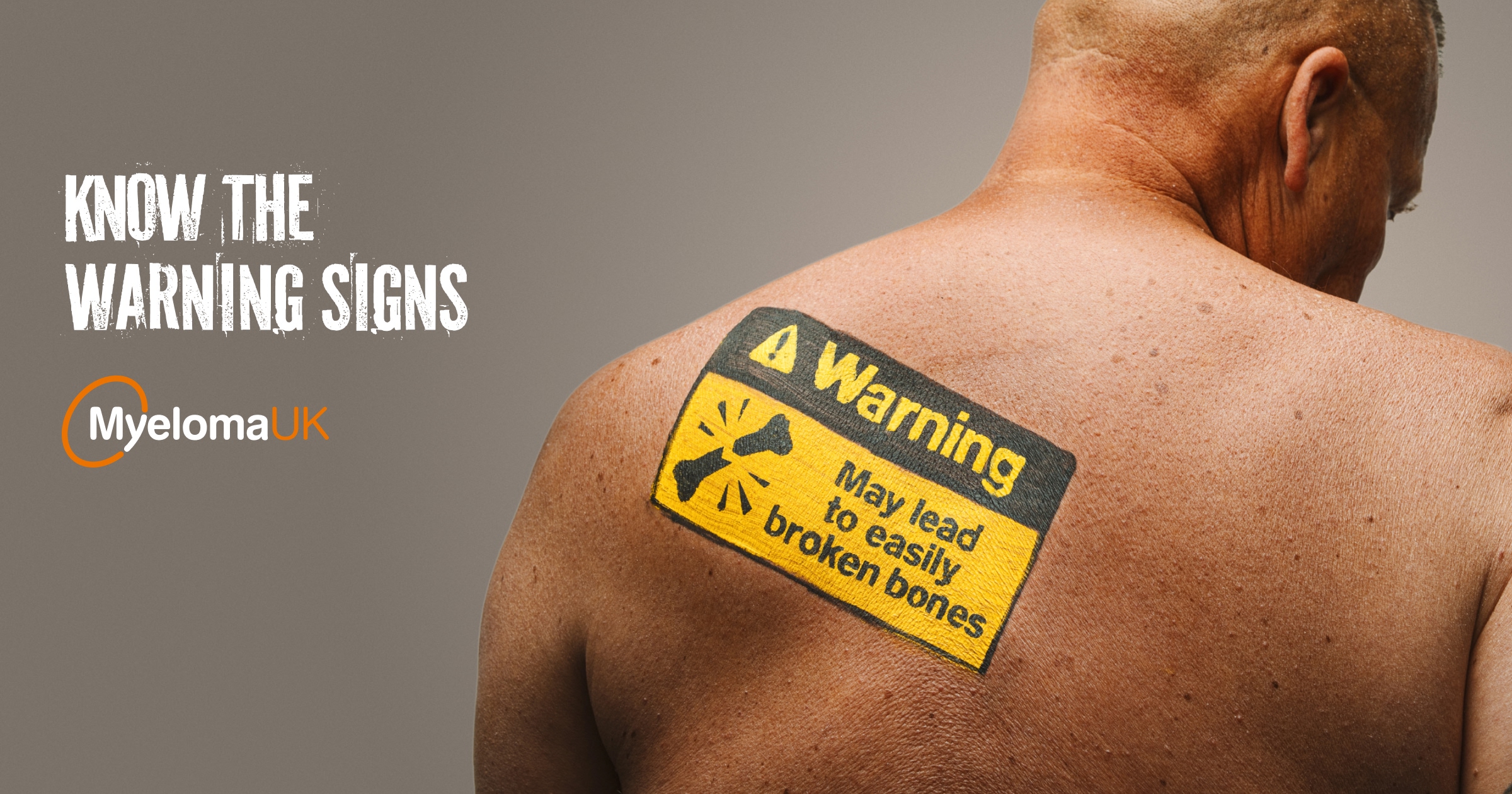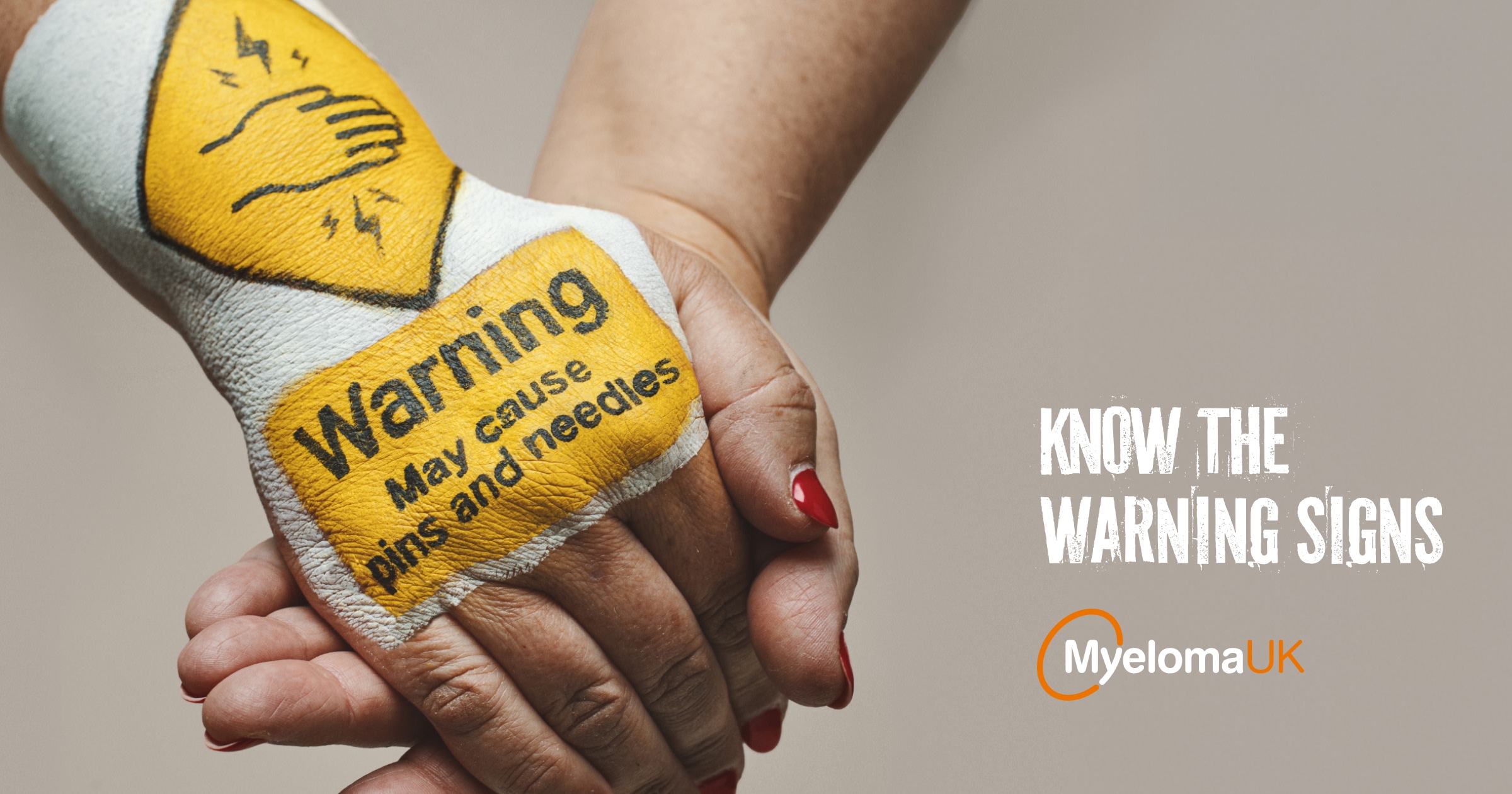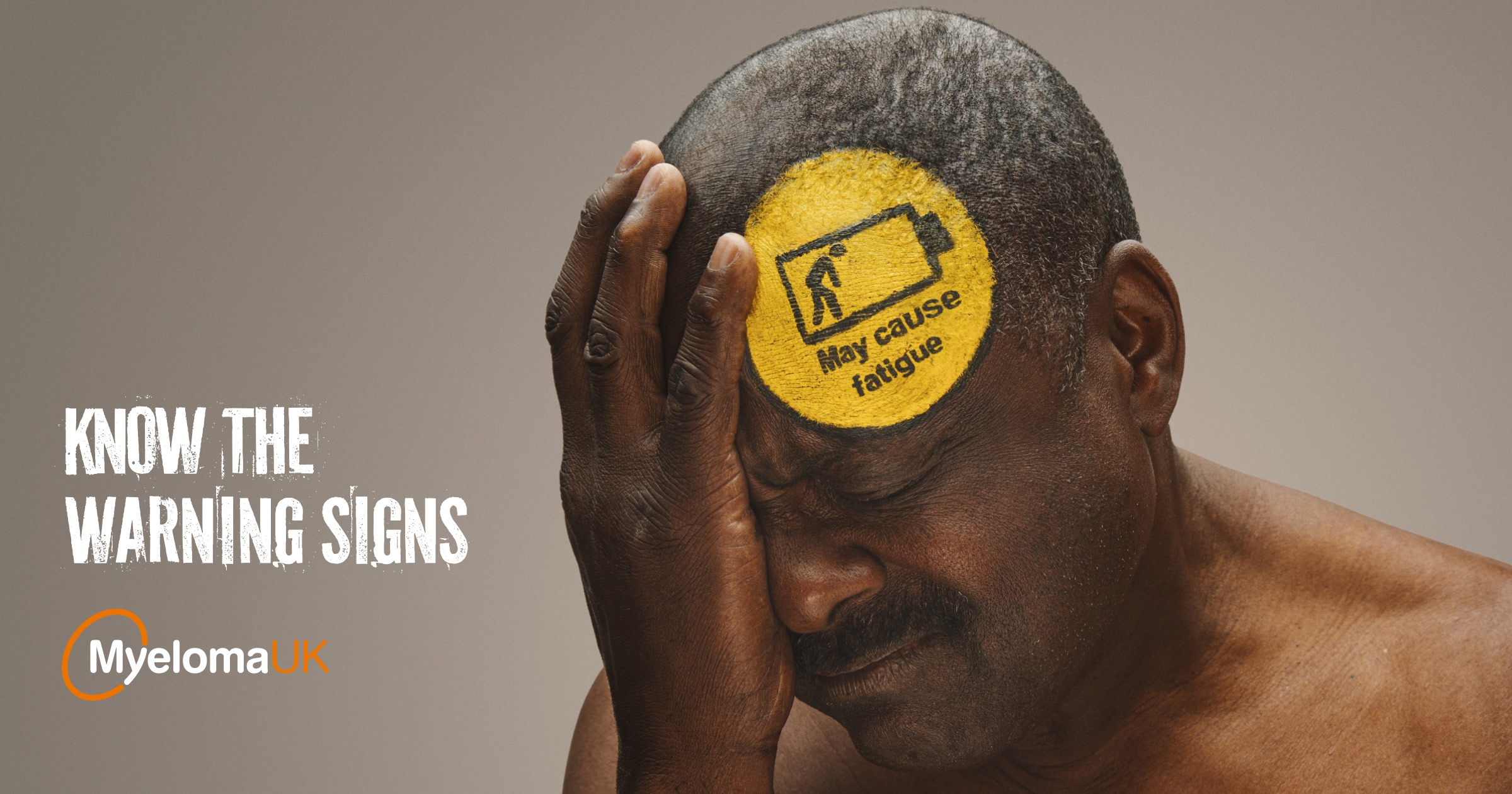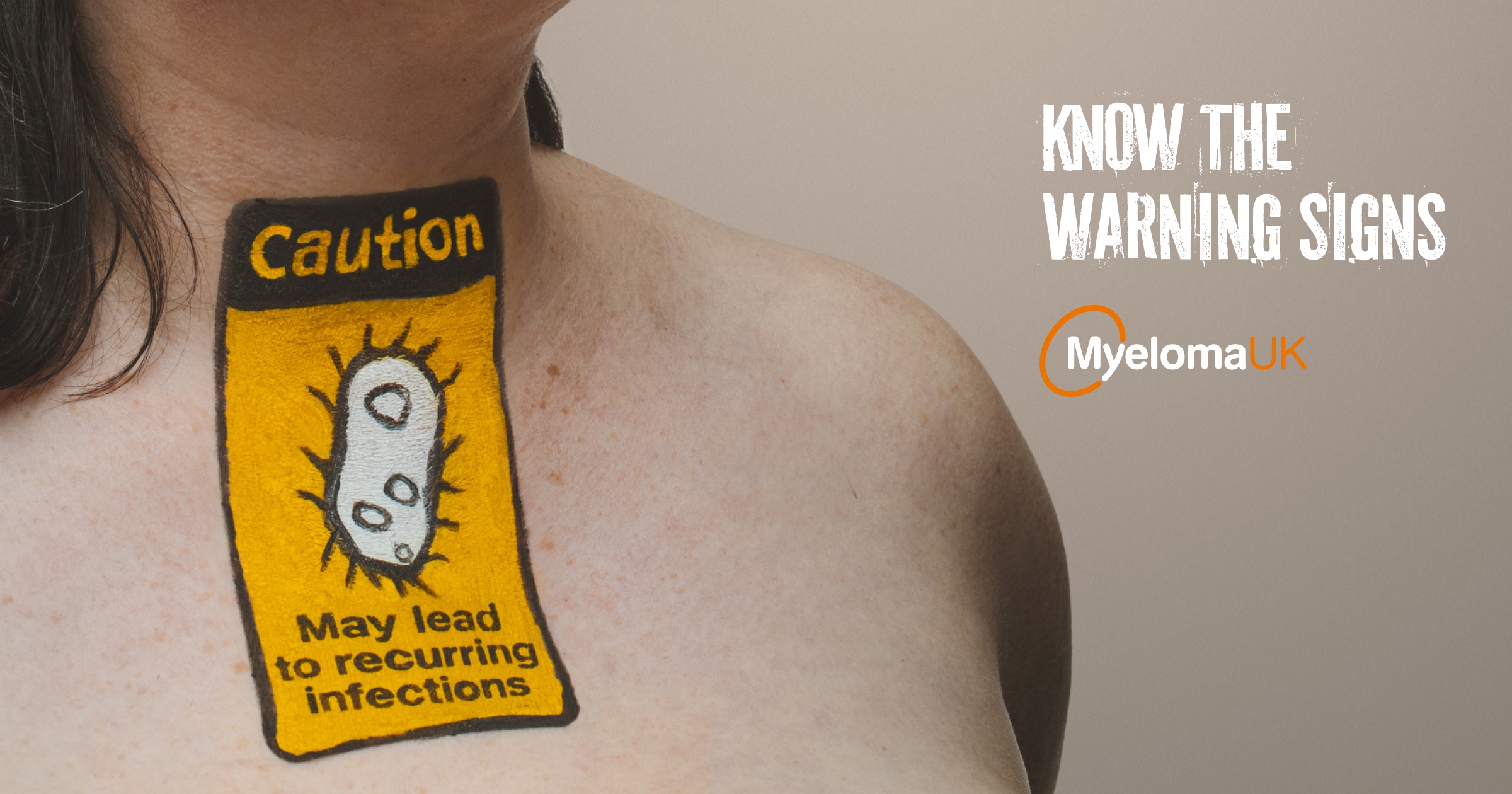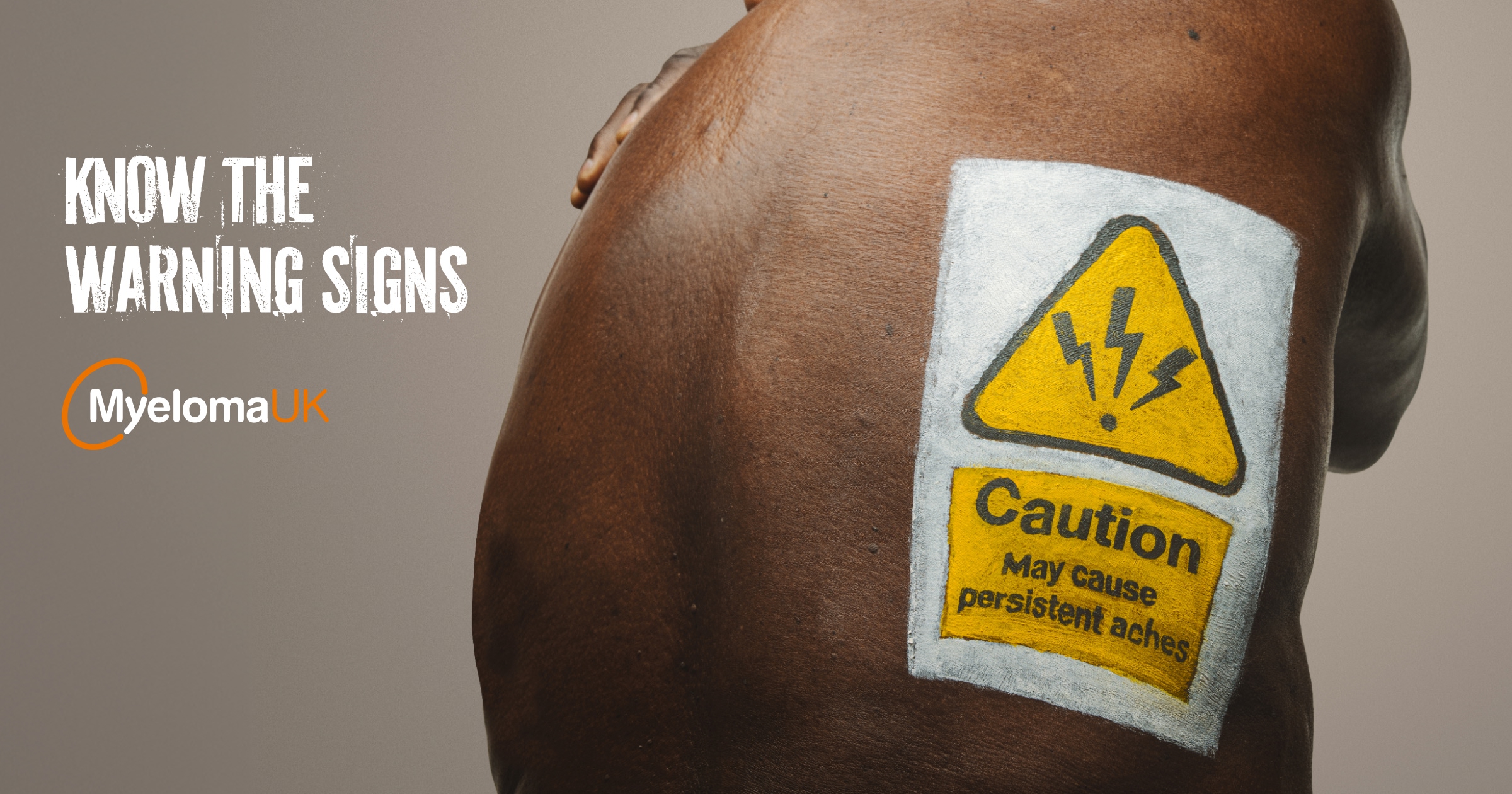We’re Employee Owned and B Corp certified!
We took advantage of an awareness week by helping Myeloma UK put the often-ignored symptoms where no one could miss them.
Insight
“It’s just old age, maybe stress, nothing to worry about.”
That’s unfortunately part of many people’s myeloma journey. But behind the everyday symptoms can be something far more serious – a complex blood cancer that currently hasn’t got a cure.
For Myeloma Awareness Week in June, Myeloma UK came to Lane for a social-first campaign that would help educate the public about the unexpected, unassuming and often overlooked symptoms. We jumped at the chance to get behind this important cause.
The ideas were aplenty, but one truth rang true – that each of the individual symptoms act as a warning sign from your body. And what better way to draw attention than to paint these warning signs directly on people – not just any people, the ones that are living with myeloma right now.
Idea
After working with our client to identify which of the many symptoms we wanted to hero in the campaign, and which of the volunteers from their network were willing to get involved, we set about finding the best placements to turn bodies into billboards.
On top of the original ask, we also took advantage of our inspiring models (Mart, Carly, Mel and Louise) to film content on set of the painting process and sat down with each of them to capture the raw reality of the lengthy and often frustrating process of getting diagnosed. Each with their own stories of misdiagnosis and variations in symptoms, they helped us drive home messaging about advocating for your health and pushing for the right tests – when it comes to blood cancer, time can make a huge difference to the type of treatment you will need.
Impact
The campaign was brought to life across social media, digital screens and an array of video content that gave audiences the authentic and candid stories behind the need for more awareness and action. Everything drove people to Myeloma UK’s symptom translator – a handy tool that people can use to note symptoms and help them talk to their GPs about their concerns.
The bold visuals were created to stop people in their tracks and the personal stories to make them stay and listen.
Here’s to hopefully making an impact on faster diagnoses and better outcomes by making the invisible, visible – and the message impossible to ignore.
Testimonial
“Lane were the perfect partner. Right from the beginning, the process was collaborative. The feedback we’ve had from those involved and who saw the campaign has been phenomenal. We’re so pleased with the results.”
Emma Pellegrini, Head of Digital, Myeloma UK
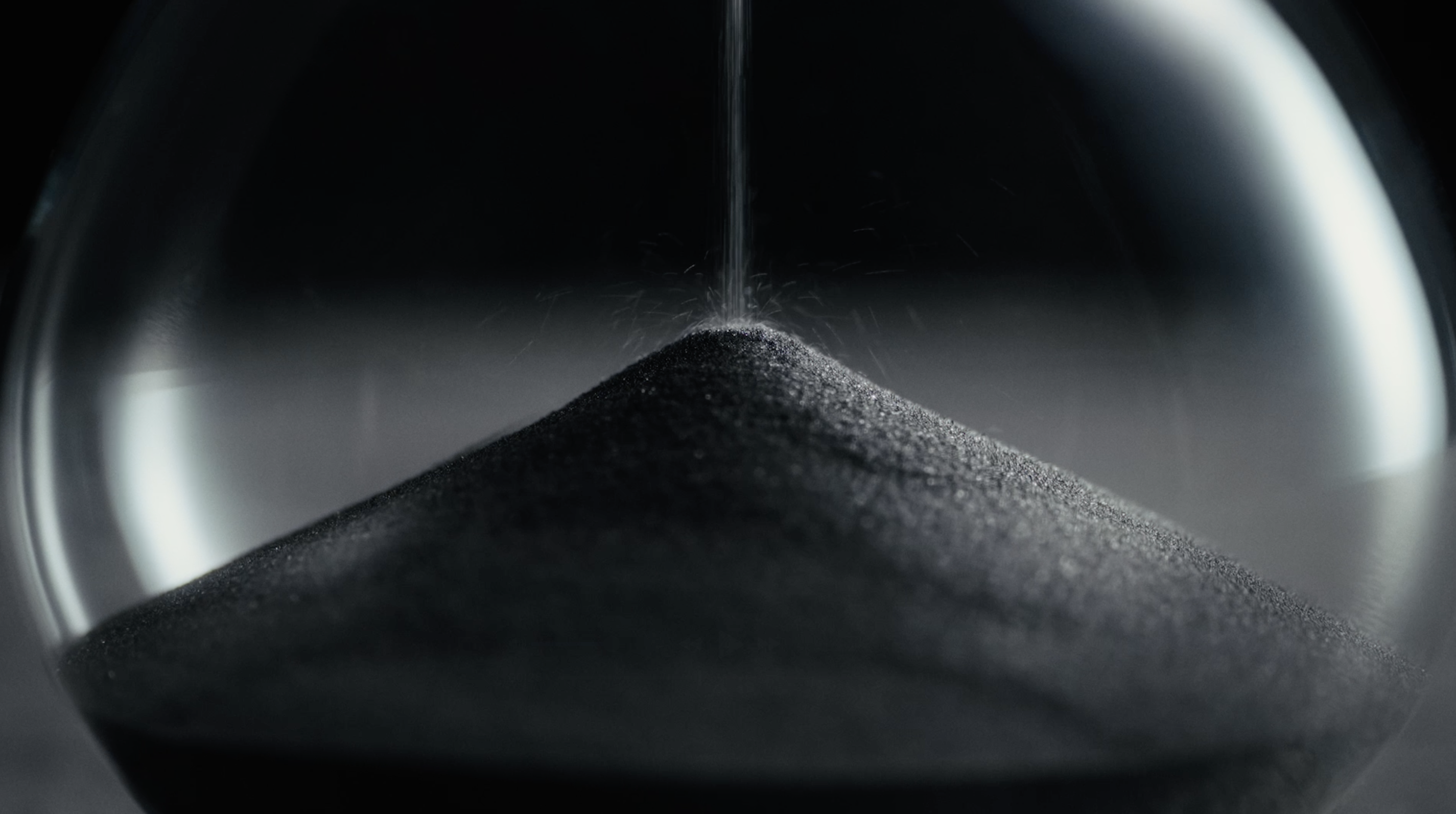
Turning the hourglass on stroke awareness
View Case Study Turning the hourglass on stroke awareness
